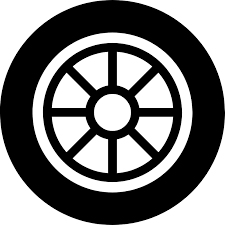
Winter and summer car tires – what you should know
Winter and summer car tires – what you should know
A car ready to drive weighs about 1.5 tonnes these days. Increasingly, it is powered by an engine exceeding or equivalent to 100 hp. Suspension designs are becoming more and more complicated, and security systems are supervised by electronic systems and many others … but nevertheless, a large part of our safety is guaranteed by four rubber tires, whose contact surface with the ground does not exceed the size of two A4 sheets.
Many drivers do not realize how choosing the right tires affects their own safety. The question is, what tires should you choose?
 Winter tires and summer tires
Winter tires and summer tires
About thirty years ago, summer or winter tires were not distinguished, they were just tires. About a decade later, the intensive development of the automotive field began, where more and more innovative solutions appeared, cars became more comfortable and it seemed that the automotive industry was at the peak of travel safety. This was not entirely true, after all, tire manufacturers took the matter into their own hands and a broadly defined division into winter and summer tires was created.
So how can they be distinguished?
The first differentiating factor is the composition of the compound from which rubber is made. Rubber in summer tires has excellent elasticity at a temperature of about 7 degrees Celsius, and at lower it becomes hard as stone. The winter tire is distinguished by high elasticity at lower temperatures, however when the temperature rises above 7 degrees it becomes excessively soft, which reduces grip and drastically accelerates tread wear.

The second factor is tread pattern. The winter tire drains water better and “bites” into the snow thanks to the channels, while the summer tire has larger tread blocks, which makes it less resistant to rolling.
Tire change can be described in the following table:
|
Tires swap |
|
|
Winter
|
Spring
|
|
Replace when the temperature at night falls below two degrees Celsius |
Replace when the temperature no longer drops below 0 degrees Celsius. |
Tires include all-season or all-season tires. The main difference is a much better quality compromise compared to standard tires. The catch, however, is the much higher price of such tires.
The same should be mentioned about the existence of directional or asymmetrical tires, but before buying them, it is worth contacting your local garage. These tires because they are specifically adapted to selected types of cars and can improve their performance.
- Used tires may have an unknown or untrue history, and there are always some risks. It is worth investing in new tires.
- Tires should be inflated at the correct pressure as recommended by the vehicle manufacturer.
- Wheels should be balanced before each season.






